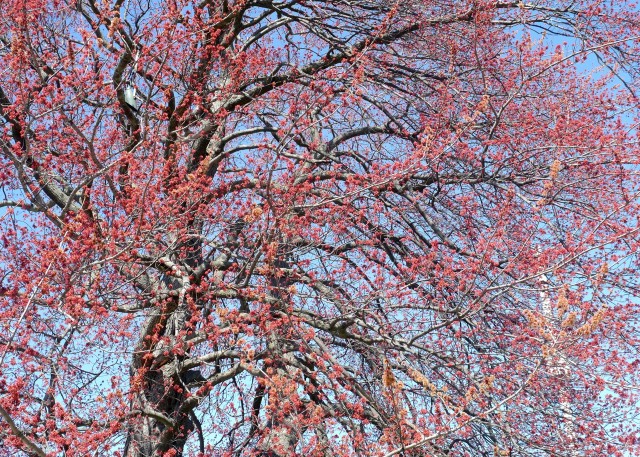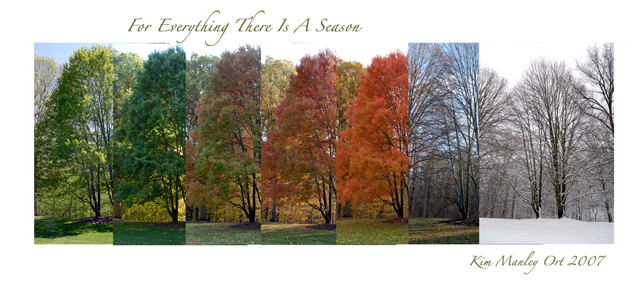
Profusion of pink
Stops me at once in my tracks
What a love is that?
I photograph trees – a lot – in all seasons. We can learn a lot from trees – about generosity, strength, perseverance, and even abandon. They’re a vital part of the ecosystem. In our interconnected world, what we do to our trees affects our water, air, other species and us. Trees breathe in carbon dioxide to keep us safe, and breathe out life-giving oxygen.
Trees are generous.
 It would probably be enough if they provided beauty (which they do), but they do so much more.
It would probably be enough if they provided beauty (which they do), but they do so much more.
* Provide shade and protection for hundreds of species.
* Help clean our air and stabilize temperature.
* Act as a noise barrier.
* Their roots keep the ground stable and prevent soil and water runoff.
* Some provide nutritious food such as fruit, nuts, seeds, or oils.
* A decaying tree still provides essential nutrients for other species. Nothing from a tree goes to waste.
Amazing, isn’t it? We simply cannot live without trees.
Humans and other species have a relationship with trees of mutualism – a relationship between two species of organisms in which both benefit from the association. We are each reflected in the other. But, are we keeping our end of the bargain?

Deforestation has become a major issue in many parts of the world.
Locally, deforestation can lead to flooding and then drought due to water runoff. Soil erosion affects the quality of agriculture. Another impact of deforestation is species loss, since trees provide habitat for hundreds of species. And, of course, deforestation leads to a huge release of carbon, affecting our climate. The release of so much carbon can lead to climate change and rising sea levels, resulting in the loss of coral reefs and fish, loss of livelihoods and an increase in tropical diseases, resulting in environmental refugees. Conflicts over wildlife and water are possible.
Source: This in-depth article on Local and National Consequences of deforestation.
What Can We Do?

* Learn more about the impacts of deforestation (at the links below).
* Support restoration of damaged ecosystems.
* Plant trees.
* Support the establishment of parks to protect forests and wildlife.
* Support companies that operate in ways that minimize damage to the environment.
* Learn more about what trees symbolize; what they have to teach us.
I photographed this tree (actually two trees that look like one) for an entire year. Sadly, they no longer exist.

Learn More about Trees
* ACT (Alliance for Community Trees) is a U.S. organization solely focused on the needs of nonprofit and community organizations engaged in urban forest protection. Together, ACT’s national network of members have planted and cared for 7.8 million trees with help from 450,000 volunteers. We can combat global warming and clean our air with every tree we plant.
* The Green World Campaign has a bold agenda: Turn degraded lands green again. Raise the living standards of the rural poor. Combat climate change. Create holistic ways to work for the health of our shared biosphere and the harmony of our global village.
* Taking Root is a film that tells the story of Kenyan Nobel Peace Prize Laureate Wangari Maathai whose simple act of planting trees grew into a nationwide movement to safeguard the environment, protect human rights, and defend democracy -a movement for which this charismatic woman became an iconic inspiration.
Wangari Maathai is founder of The Greenbelt Movement. She was the 2004 winner of the Nobel Peace Prize for her work.
Books on Trees to Share With Children
* The Giving Tree by Shel Silverstein
This children’s book is a controversial classic for all ages. Why controversial? Well, there are two ways of looking at the book.
1. It is a story of unconditional love between a boy and a tree. The tree is always there for the boy even when it is cut down.
2. The tree is always there for the boy, always giving of itself while the boy takes and does not give back.
I believe that it offers a powerful lesson. Why is the boy often sad and in trouble? The tree is just there doing its thing and available to the boy. I know trees are not happy or sad but, in this case, the tree accepts its fate without judgment while the boy never seems to figure that out.
No matter which way you look at it, it will spark a conversation.
* The Lorax (book and movie) by Dr. Seuss was published in 1971 and still rings true today. Another classic for all ages to spark a conversation. Here’s an excerpt:
I am the Lorax. I speak for the trees.
I’ve come here to celebrate Earth Day, so please
Come join me and help spread the message I bring.
Be a friend to the trees and to each living thing.
The Once-ler, now remorseful, tells the story of his greedy past. He cuts down trees and uses up resources to sell products. The Lorax is the character who speaks up for the trees (“for the trees have no tongues”) but it does not help. Finally, there is almost nothing left but all hope is not lost. This book was published in 1971 and still rings true today. Another classic for all ages to spark a conversation.
What do trees mean to you?
I love trees and have developed a bit of an obsession about photographing them recently. I was so saddened to read that the beautiful tree(s) that you documented throughout the year is no longer there. From my study window I look out at a majestic and magnificent tree whose branches span three garden widths (narrow gardens, but still). I live in fear that one day someone will take it down because it casts too much shade, or simply because they feel like it. It’s almost like a friend to me, showing me the passing of the seasons and never failing to inspire awe.